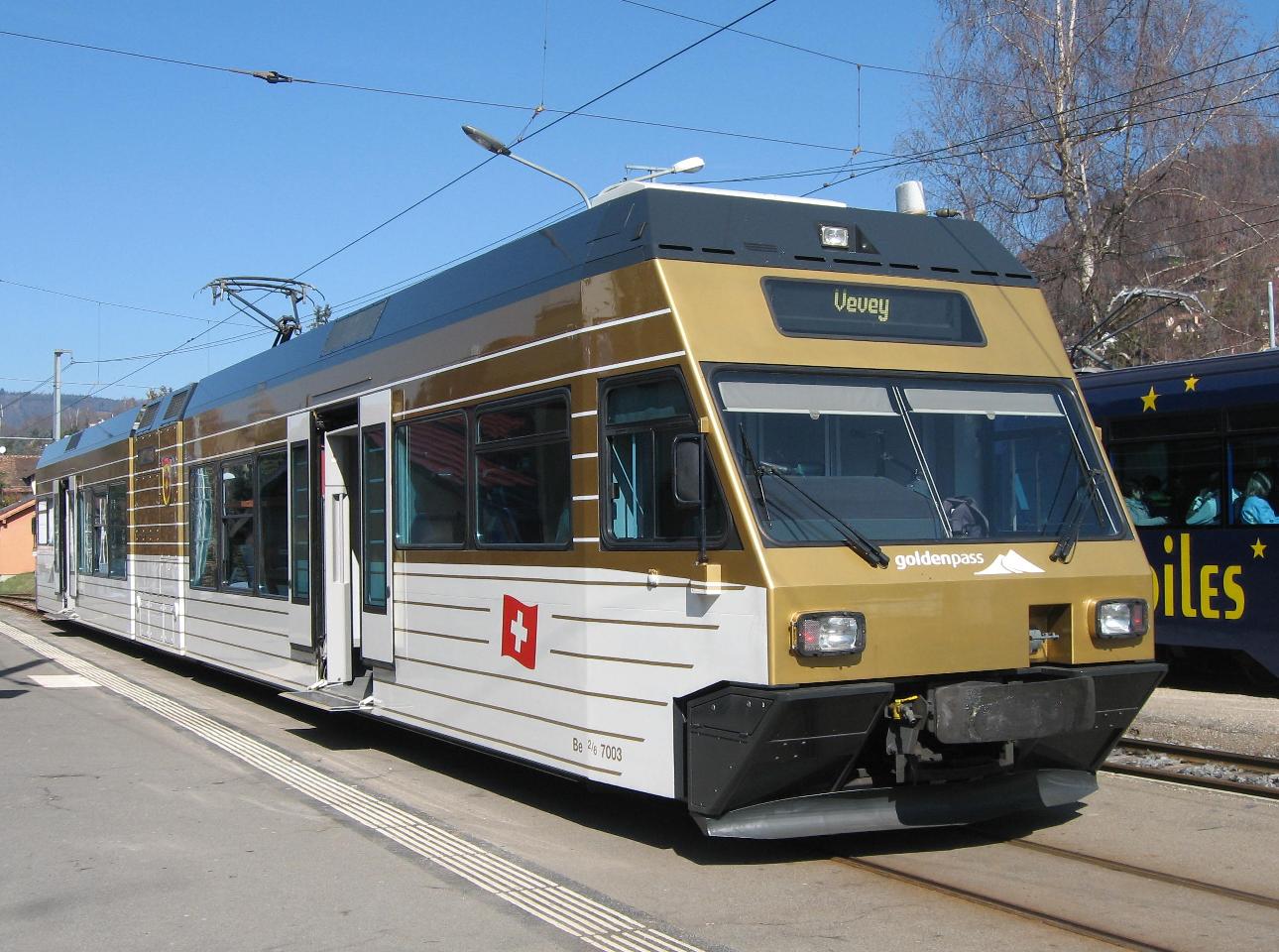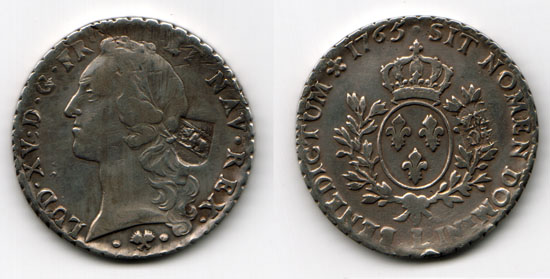|
Wil–Ebnat-Kappel Railway
The Wil–Ebnat-Kappel railway is a single-track standard-gauge line that runs through the Toggenburg region of Switzerland. It was built by the Toggenburgerbahn (Toggenburg Railway; TB). Its 25 kilometre-long, standard gauge line from via Wattwil to Ebnat-Kappel was opened on 24 June 1870. The TB was nationalised as of 1 July 1902 and became part of the Swiss Federal Railways (SBB). History Project development and construction After the opening of the St. Gallen–Winterthur railway there were strong demands for a railway in the Toggenburg. As early as 1856, a planning commission founded on the initiative of industrialists led by Johann Rudolf Raschle commissioned a design for a Wil–Ebnat-Kappel, Ebnat railway. An option that would have run from Lütisburg to Uzwil or Flawil was rejected for topographical and financial reasons. A detailed financial estimate amounting to Swiss francs (CHF) 6 million was compiled at the end of 1858. For a long time nothing was hea ... [...More Info...] [...Related Items...] OR: [Wikipedia] [Google] [Baidu] |
Stadler GTW
The Stadler GTW is an articulated railcar for local transport made by Stadler Rail of Switzerland. GTW stands for Gelenktriebwagen (articulated railcar). History The Biel–Täuffelen–Ins-Bahn near Bern, Switzerland was looking for a lighter train model to replace its aging fleet, so that a low floor system does not require heavy installations on the roof. Based on that requirement Stadler came up with a concept of placing most of the equipment in a central unit between the seating cars. While the BTI-Bahn tracks are meter gauge, Stadler presented the first prototype in 1995 set on standard gauge rails, and the Mittelthurgau-Bahn tested three prototypes on its standard gauge network during 1996. The rolling stock for Mittelthurgau was later expanded to 10 GTW 2/6 (built 1998–1999) that are now part of the THURBO fleet (the three prototypes were sold to Italy). The next lots were produced in meter gauge, and were delivered to the BTI-Bahn and the CEV-Bahn (Chemins de fer éle ... [...More Info...] [...Related Items...] OR: [Wikipedia] [Google] [Baidu] |
Uznach–Wattwil Railway
The Uznach–Wattwil railway, also called the Rickenbahn (Ricken Railway) is a single-track standard-gauge line in Switzerland. It was opened on 1 October 1910 by the Swiss Federal Railways. It is 14.37 kilometres long, including 8,603 kilometres in the Ricken Tunnel. History The construction of this line is directly related to the construction of the Bodensee–Toggenburg railway by the ''Bodensee-Toggenburg-Bahn''. Its line included the St. Gallen–Wattwil section of the St. Gallen–Wattwil–Rapperswil project, which was promoted by the engineer "Lusser" and for which a concession was granted on 27 June 1890. As a result of the skilful tactics of the canton of St. Gallen, construction of the line was transferred to the Toggenburgerbahn, the builder of the Wil–Ebnat-Kappel railway. However, it did not have to start construction, as its nationalisation was imminent and it was taken over by the United Swiss Railways (''Vereinigte Schweizerbahnen''; VSB). As ... [...More Info...] [...Related Items...] OR: [Wikipedia] [Google] [Baidu] |
United Swiss Railways
The United Swiss Railways (''Vereinigten Schweizerbahnen''; VSB or V.S.B.) was a former railway company in Switzerland. It was the smallest of the five main railways that were nationalised from 1902 to form the Swiss Federal Railways. Foundation and financing The United Swiss Railways were established on 1 May 1857 by the merger of three railway companies, all of which were in financial difficulties: * The Sankt Gallisch-Appenzellische Eisenbahn (St. Gallen-Appenzell Railway; SGAE) opened the Winterthur–Wil–St. Gallen–Rorschach railway between 15 October 1855 and 25 October 1856. The construction of the line required the building a number of important bridges. The final sections planned lacked funding. * The ''Schweizerische Südostbahn'' (Swiss Southeast Railways, SOB)—not to be confused with the current Südostbahn—sought to build a railway under the Lukmanier pass that had been proposed by the engineer Richard La Nicca as early as 1839. The company was founded on ... [...More Info...] [...Related Items...] OR: [Wikipedia] [Google] [Baidu] |
Krauss-Maffei
KraussMaffei is a German manufacturer of injection molding machines, machines for plastics extrusion technology, and reaction process machinery. It was acquired by ChemChina in 2016. History Locomotives KraussMaffei was formed in 1931 from a merger of the two Munich firms of Maffei (founded 1838) and Krauss & Co. (founded 1860). Both belonged to the leading German makers of locomotives of various types. Maffei also built other steam-operated vehicles and, later, manufactured vehicles with combustion engines, including locomotives, trolleybuses and buses until the 1950s. The headquarters of the firm remained in Munich. In the 1960s, KraussMaffei built several examples of the ML 4000 C′C′ diesel-hydraulic locomotive for demonstration and testing on American railroads. Southern Pacific and Denver & Rio Grande Western Railroad participated in the tests, but both found the locomotives unsuitable for service in the rugged Rocky Mountains through which the two railroads ran. I ... [...More Info...] [...Related Items...] OR: [Wikipedia] [Google] [Baidu] |
Canton Of St
Canton may refer to: Administrative division terminology * Canton (administrative division), territorial/administrative division in some countries, notably Switzerland * Township (Canada), known as ''canton'' in Canadian French Arts and entertainment * Canton (band), an Italian synth pop group * "Canton" (song) by Japan * Canton, a fictional town in " Jaynestown", an episode of ''Firefly'' Design * Canton (building), a corner pilaster * Canton (flag), an emblem placed in the top left quarter of a flag * Canton (heraldry), a square or other charge (symbol) occupying the upper left corner of a coat of arms * Canton porcelain, Chinese ceramic ware People * Canton (surname), and list of people with the surname * Canton Jones, American Christian music/hip-hop artist Places Canada * Canton, New Brunswick, a community in Drummond Parish, New Brunswick * Canton, Ontario China * Guangdong (Canton Province), province in southern China * Guangzhou (Canton City), capita ... [...More Info...] [...Related Items...] OR: [Wikipedia] [Google] [Baidu] |
Swiss Franc
The Swiss franc is the currency and legal tender of Switzerland and Liechtenstein. It is also legal tender in the Italian exclave of Campione d'Italia which is surrounded by Swiss territory. The Swiss National Bank (SNB) issues banknotes and the federal mint Swissmint issues coins. In its polyglot environment, it is often simply referred as german: Franken, french: franc, it, franco and rm, franc. It is also designated through signes: ''Fr'' Some fonts render the currency sign character "₣" (unicodebr>U+20A3 as ligatured Fr, following the German language convention for the Swiss Franc. However, most fonts render the character as F with a strikethrough on the lower left, which is the unofficial sign of French Franc. (in German language), ''fr.'' (in French, Italian, Romansh languages), as well as in any other language, or internationally as ''CHF'' which stands for ''.'' This acronym also serves as eponymous ISO 4217 code of the currency, CHF being used by banks and financial ... [...More Info...] [...Related Items...] OR: [Wikipedia] [Google] [Baidu] |
Flawil
Flawil is a municipality in the canton of St. Gallen in Switzerland with slightly over 10,000 inhabitants. It is the regional centre of Untertoggenburg, but belongs to the ''Wahlkreis'' (constituency) of Wil. History Flawil is first mentioned in 858 as ''Flawilare marcho''. Several of the surrounding hamlets were also mentioned in about the same era. Alterswil was first mentioned in 858 as ''Altiricheswilae'', Oberglatt in 731 as ''villa Clata'' and in 1316 as ''Obren Glat'' and Burgau in 964 as ''Purchouva''. Geography Flawil has an area, , of . Of this area, 53.1% is used for agricultural purposes, while 22.6% is forested. Of the rest of the land, 23% is settled (buildings or roads) and the remainder (1.3%) is non-productive (rivers or lakes). The municipality is located in the Wil ''Wahlkreis.'' It was the capital of the earlier ''Bezirk''. To the north-east it is bordered by the Wissbach valley and the Glatt river. It consists of the extended linear village of Flaw ... [...More Info...] [...Related Items...] OR: [Wikipedia] [Google] [Baidu] |
Uzwil
Uzwil is a municipality in the ''Wahlkreis'' (constituency) of Wil in the canton of St. Gallen in Switzerland. History Uzwil was first mentioned in 819 as ''Uzzinwilare''. The village of Henau was first mentioned 754 as ''Villa Aninauva'' at the Monastery of St. Gallen in the "Henau document" (''Henauer Urkunde''). Geography Uzwil has an area, , of . Of this area, 53.7% is used for agricultural purposes, while 17.9% is forested. Of the rest of the land, 26.8% is settled (buildings or roads) and the remainder (1.7%) is non-productive (rivers or lakes). The municipality consists of the villages Niederuzwil, Uzwil, Henau, Algetshausen, Niederstetten, Oberstetten and Stolzenberg. It is located in the northern Toggenburg between Wil and Gossau. Coat of arms The blazon of the municipal coat of arms is ''Azure a lower semi Mill Wheel and above it Ears of Wheat Or.'' Demographics Uzwil has a population (as of ) of . , about 25.1% of the population was made up of foreign national ... [...More Info...] [...Related Items...] OR: [Wikipedia] [Google] [Baidu] |
Lichtensteig Alte Station
Lichtensteig is a municipality in the ''Wahlkreis'' (constituency) of Toggenburg in the canton of St. Gallen in Switzerland. History Lichtensteig was founded by the counts of Toggenburg in the early 13th century, first mentioned in 1228 as ''Liehtunsteige''. A market is mentioned in 1374, and the right to hold markets is confirmed in 1400. A letter of privileges issued by the lords of Raron 1439 confirms the existence of a council of twelve burghers, and the joint appointment of judges by the burghers and the land lords. The mayor ( Schultheiss) was appointed by the land lord from a list of candidates compiled by the burghers. After the acquisition of the Toggenburg by the Abbey of St. Gallen in 1468, Lichtensteig became the seat of the abbot's reeve. Abbot Ulrich Rösch in 1469 confirmed the existing privileges of Lichtensteig. The council declared support of the Reformation in 1528. Lichtensteig church from this time was used both by Reformed and Catholics, while schools wer ... [...More Info...] [...Related Items...] OR: [Wikipedia] [Google] [Baidu] |





.jpg)